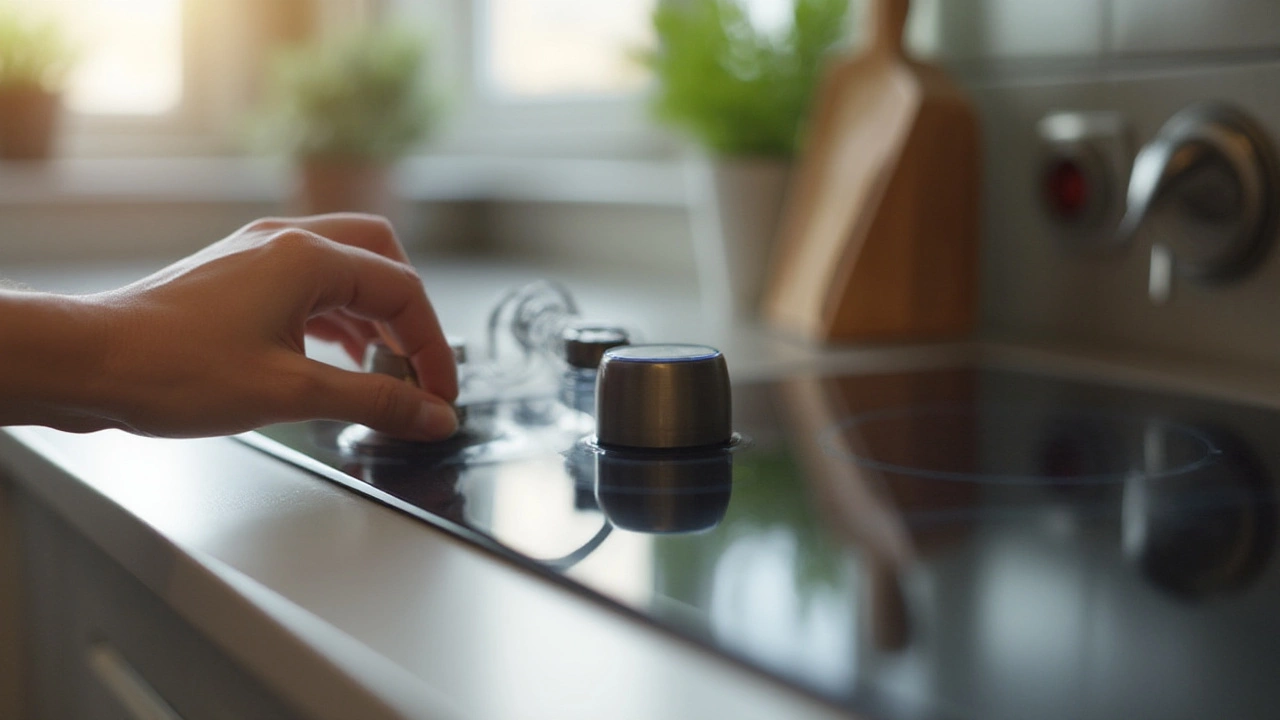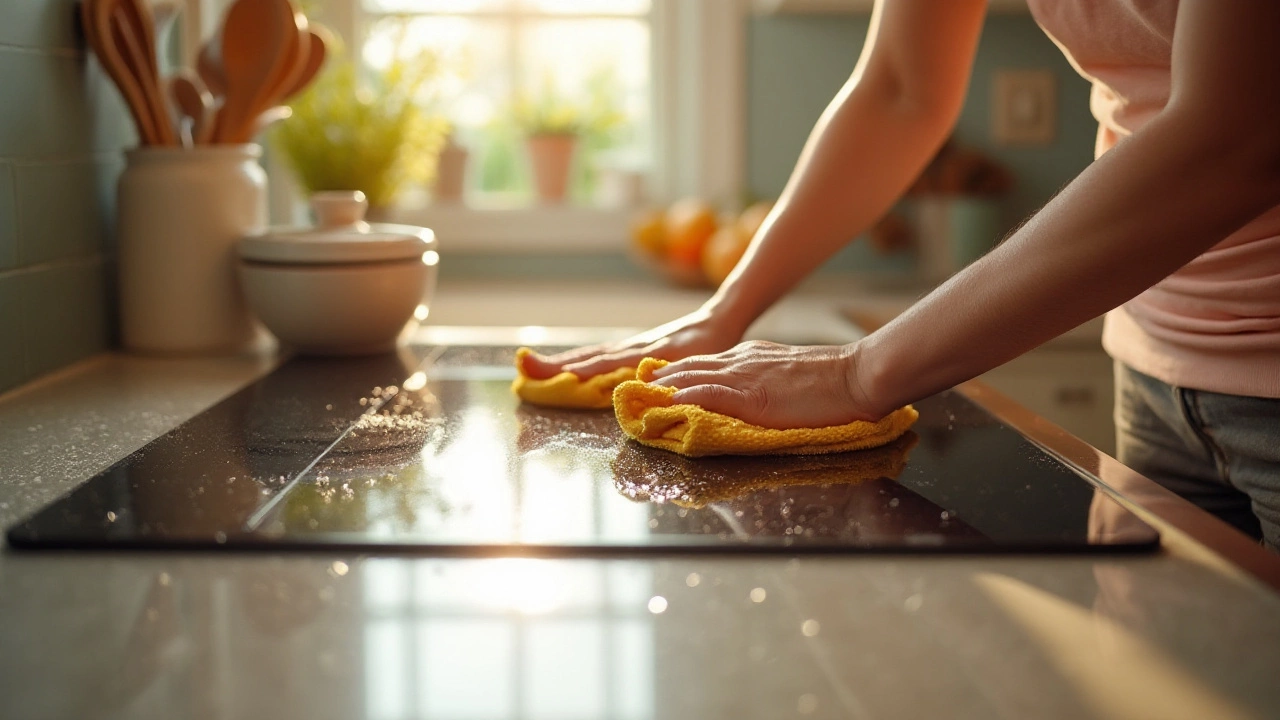The lifespan of a kitchen hob isn't just a matter of years; it's influenced by how you use and care for it. People often overlook the fact that routine maintenance plays a significant role in determining how long these appliances serve faithfully.
It's crucial to recognize that not all hobs are created equal. Different models and types may have different life expectancies. While some durable hobs can last over a decade, others might need replacement much sooner if not properly maintained. Fortunately, being informed about what wears them out and how to care for them can help extend their life.
- Understanding Hob Lifespan
- Factors Affecting Hob Durability
- Identifying Signs of Wear
- Maintenance Tips for Longer Life
- When to Consider Repairs or Replacement
Understanding Hob Lifespan
Understanding how long your hob should last begins with knowing the typical lifespan expectations of different hob types. In general, a well-maintained electric or gas hob can serve you for about 10-15 years, while induction hobs often demonstrate a similar durability range. The longevity heavily depends on the quality of the appliance and how you care for it. When buying a new hob, it's tempting to consider cheaper options, but they might not stand the test of time as robustly as their higher-end counterparts. Proper research and ensuring your choice matches your cooking needs could also factor significantly into its lifespan.
Usage habits are critical to a hob’s life expectancy. A hob that’s used every day for several hours is more likely to experience functional decline sooner than one used a few times each week. Every time you use your hob, small amounts of wear and tear may occur, which accumulates over time. It’s not just about the frequency of use, but also the intensity and how it aligns with the hob’s designed capacity. Many users ignore the manual’s operating guidelines, potentially overloading or overheating their stoves, which can significantly reduce their efficiency and lifespan.
Maintenance plays a major role in helping you get the most out of your hob. Simple practices like routinely cleaning the hob surface after each use, ensuring the burners and heating elements remain unobstructed, and avoiding spills from becoming baked onto the surface can be game changers. Regular servicing by a professional, particularly for gas hobs, can nip potential issues in the bud before they result in costly repairs or premature breakdown. A well-loved and cared-for hob can sometimes exceed the typical lifespan expectations, proving that some effort can indeed enhance durability.
"Routine checks and balance between usage and rest can extend the life of a hob significantly," says a leading appliance service expert.Understanding warning signs that your hob might be nearing the end of its life can also help you prepare for potential replacement. If you notice inconsistent heating, unusual noises, or repeated ignition problems, particularly in older models, these could be indicative of deeper issues. Moreover, advancements in technology may also influence your decision to replace an older model with a newer, more efficient or environmentally friendly option, even if it’s technically still functional.
Factors Affecting Hob Durability
Understanding the factors that contribute to your hob's longevity isn't just about being savvy with appliances; it's about ensuring safety and efficiency in your kitchen. One ought to consider the material of the hob surface, as it plays a substantial role in durability. Ceramic hobs, while sleek and aesthetically pleasing, require gentle handling and regular maintenance to avoid scratching that can deteriorate their surface. In contrast, stainless steel hobs are robust but might require more elbow grease to keep pristine due to their tendency to show smudges and fingerprints. Glass hobs, while visually striking, are more prone to breakage if heavy cookware is placed harshly. Thus, the choice of material significantly influences how long your hob will last in active service.
Frequency of use is another critical factor to assess. A hob that's used multiple times daily will naturally incur more wear and tear than one that's utilized sporadically. This doesn't necessarily mean less frequent use is better for all hobs. Rather, regular, gentle use with appropriate cookware can help maintain a hob's condition. It's essential to use cookware with flat bottoms to distribute heat evenly and prevent warping surfaces. Some folks also recommend rotating usage between burners if you have a multi-burner hob, ensuring that wear is distributed evenly across all units, thus prolonging the life of each burner. Interestingly, a study published in the Journal of Appliance Efficiency found that routine, balanced use can extend an appliance's lifespan by up to 20%.
Maintenance and Cleaning Routine
Your hob's maintenance routine is yet another vital aspect. Regular cleaning after each use prevents the build-up of food deposits which can not only cause unsightly stains but also impede performance. For instance, hardened food particles stuck on burner elements can cause uneven heating. A simple mixture of vinegar and water works wonders for surface cleaning. The gentle acidity helps lift stubborn grime without causing any damage to the hob surface. Experts argue that immediate cleaning prevents these particles from hardening, making upkeep easier and more effective over time. As Tom Jenkins from Kitchen Experts states,
'A little effort each day can prevent a mountain of residue and repairs down the road.'So adopting these small habits makes sure that maintenance doesn't turn into a time-consuming chore.
Lastly, the installation process itself can impact the durability of your hob. Ensuring that the hob is level and not installed over a source of excessive heat, such as a radiator, prevents unnecessary thermal expansion and potential damage. The installation should also allow for adequate ventilation, preventing heat build-up which can weaken the hob components over time. An incorrectly installed hob is prone to breakage and unpredictability, much more than one that's set up under optimal conditions. By following such preventive measures, you not only safeguard your investment but also enhance your kitchen's safety, knowing that your appliances are functioning as intended.

Identifying Signs of Wear
Every homeowner eventually comes face-to-face with the tell-tale signs that their kitchen hob might be calling for a closer inspection. Recognizing these indicators early can save a significant amount of hassle and expense down the line. One common symptom of wear is inconsistent heat distribution. You might find your pan hot on one side and cold on the other. This could be a sign that the heating element is failing, which often requires immediate attention to avoid further damage to the hob or even potential safety hazards.
Another crucial sign to watch for is any unusual noises. Clicking sounds on gas hobs are normal during ignition, but persistent or strange sounds like buzzing or rattling should be examined. These noises can indicate a problem with the internal components, potentially linked to issues with the electrical connections or gas flow. Subtle signs such as low flames even at the highest setting or a slow response in induction hobs can be frustrating. Often, these issues stem from wear in the control knobs or wiring.
"A stitch in time saves nine, and this couldn't be truer for appliance maintenance," says kitchen appliance expert Mike Selway. "Spot the signs early, and you'll likely avoid a hefty repair or the inconvenience of a full replacement sooner than expected."
Moreover, visible damage, like cracks on ceramic or glass hobs, can compromise safety and efficiency. Such deterioration is more than superficial; it can lead to more severe problems if ignored. Even the buildup of residue on burners or grills, which doesn't seem like a big deal, can affect performance. The accumulation of grease and debris can obstruct gas flow in gas models or affect the electric coils in ceramic or induction tops. Sometimes, cleaning this residue away can be all it takes to restore optimal functionality.
To dive deeper, if you're experiencing persistent electricity surges or recurring power trips once the hob is in use, it might indicate worn-out wiring which needs a professional eye. Electricity-related issues shouldn't be taken lightly as they pose any number of risks, including fire hazards. Keeping an eye out for these signs is essential. Regular observation lets you catch these problems early on. Preventative care can help avoid unnecessary repair calls and extend the longevity of your hob lifespan.
Even routine checks can make a difference. It pays to invest some time every few months to inspect your hob carefully. Look out for discoloration or inconsistent material integrity around heating components. Early identification and proactive response are the keys to maintaining your kitchen appliance care efforts. Checking your hob a few times each year, especially during intense cooking periods like holidays when they are most taxed, can ensure that your hob keeps up with your culinary demands seamlessly.
Maintenance Tips for Longer Life
When it comes to making sure your kitchen hob stands the test of time, a regular maintenance routine can be your greatest ally. A well-maintained hob not only serves you efficiently but also ensures safety in the kitchen. You might not think about it often, but hobs demand attention to function at their peak. Regular cleaning is vastly important – spills and food debris are common occurrences and should be dealt with promptly. Embrace the habit of wiping your hob after each use to prevent buildup, and every week, give it a deeper clean using suitable non-abrasive cleaning agents to avoid scratching the surface.
Proper hob maintenance starts with knowing what type of hob you have: electric, gas, or induction. Each variety might tick a different box in your maintenance checklist. For gas hobs, regular checking of burners could prevent clogging, ensuring an even flame needed for effective cooking. Electric hobs might require inspecting the coils for faults to avoid uneven heating. Those with induction hobs should keep an eye out for signs of surface damage since this could impact the hob's efficiency and safety.
Do not underestimate the significance of a shine. You see, polishing your hob can do wonders not only for aesthetics but for its longevity. Scratches can be minimized by using a soft, damp cloth, and in the case of an electric hob, unplugging it beforehand is crucial to ensure safety. Taking these simple precautions can extend the life of your beloved kitchen appliance, keeping it in prime condition for years to come.
Adjusting your cooking practices can also increase your hob's longevity. Try using cookware appropriate for your specific type of hob. Highland speech on cookware’s flat-base: a flat surface ensures maximum contact and, consequently, efficiency. Believe it or not, cooking with lids on can reduce grime since it curtails spattering, lessening the cleaning burden.
According to Richard Collins, a seasoned home appliance expert, "The key to appliance longevity is in the routine. Just as cars need oil changes, your hob needs care to prevent major failures."
Engage with regular inspections too. Take a few minutes every month to check for any signs of damage, like cracks or uneven surfaces. If your hob shows signs of damage or it's not heating evenly, it may be time for a professional check-up. Repairs, when needed, can seal ongoing damage, potentially salvaging your hob from a complete breakdown.
Don't forget, the environment surrounding your hob matters too. Ensuring proper ventilation can prolong the life of your appliance. Kitchens with poor airflow witness surplus grime, affecting the hob's performance. You may also want to invest in a good quality range hood to help combat the grease and odors that accompany cooking.

When to Consider Repairs or Replacement
Deciding when to repair or replace your kitchen hob involves a delicate balance between cost, safety, and performance. One key sign it's time to consider action is when the hob takes much longer than usual to heat or seems unable to maintain consistent temperatures. Consistency is crucial in cooking, and a hob that can't deliver invites frustration and food mishaps, detracting from your culinary passion. Investigate whether the burners or elements are functioning uniformly; if not, it’s prudent to assess the unit thoroughly.
Bizarre sounds or unusual smells are another red flag. A properly functioning hob should operate quietly and without emitting strange odors. If you notice a persistent electrical buzz or perhaps a smell of gas—if it's a gas hob—it's imperative to address the issue immediately. Gas leaks are particularly hazardous, warranting immediate professional attention. For older hobs, the constant need for repairs could suggest putting funds toward a new unit instead of persisting with an inefficient appliance.
The evolving world of kitchen technology also factors into the decision. Newer models often feature energy-saving technologies and safety enhancements that might not be present in older ones. At times, investing in advancement can lead to greater efficiency and lowered energy costs in the long run. How long should a hob last does depend on maintenance quality, but technology evolution shouldn’t be ignored. Many homeowners find replacing older models wise when considering this.
It’s vital to evaluate the age and the warranty status of your appliance. If the hob stops working suddenly and repairs fall under warranty, it's a no-brainer to opt for fixing it. However, if out of warranty and the repair costs begin to creep close to the price of a new hob, replacement often becomes the more economically sound decision. It's wise to compare these dynamics comprehensively to ensure the best financial and practical choice.
Seek Expert Guidance Before Finalizing
Consulting with appliance professionals can offer peace of mind about your decision. While it's wise to conduct due diligence on your own, tapping into expert insights can sometimes reveal less obvious issues or solutions. They might even recommend preventative maintenance if the hob is still mostly operational but occasionally faltering.Sometimes, what appears like a major problem may have a simple fix. Swapping a faulty burner, fixing wiring issues, or replacing a heating element might be all it takes to get your appliance back on track. However, if these measures become frequent, a replacement is often the optimistic way forward.

I am an expert in the services industry with a focus on appliance repair. My passion lies in understanding how things work and educating others in simple, engaging ways. This enthusiasm fuels my writing, where I delve into topics around appliance maintenance and troubleshooting. I aim to make these subjects clear and accessible to all readers.